Journal of Research and Development
Open Access
ISSN: 2311-3278
ISSN: 2311-3278
Research Article - (2025)Volume 13, Issue 1
Nowadays, the development progress of dairy technologies is fast growing on our planet. However, in developing countries, the adoption innovation and experience of dairy technology is at an infant stage. This paper analyzed smallholder producers’ willingness to pay for artificial insemination dairy technology in Adea district, Oromia, Ethiopia. The samples of 384 dairy producers were collected to illustrate their willingness to pay for artificial insemination. These producers were characterized as subsistence and commercializing. Accordingly, 118 producers who were cooperative members produced for the market and on another hand 266 samples were smallholder producers’. Samples were selected from Hidi, Wajitu and Dankaka kebeles of the district. The data were analyzed by Tobit econometric model. The result of the model figured out that training, land ownership, co-operative membership and credit affected dairy producer’s willingness to pay for artificial insemination of dairy technology positively and significantly. Therefore, building the capacity of dairy producers through training by strengthening organizations that provide the inputs such as saving and credit services and primary dairy cooperatives is important to enhance producers’ willingness to pay for artificial insemination dairy technology.
World dairy production is predicted to increase by 1.7 percent per annual from 2022 up to 2030 over the coming 8 years; this is most boosters than most products of agricultural products. Whereas the world means increment of the flock is 1.1 percent which is higher than the world mean product increment of 0.7 percent per annual, the increasing means are the outcome of flocks increasing faster in countries that have relatively low products and that have flocks contained lower producing livestock.
The population of Ethiopia is assumed to increase from about 115 million in 2022 to 190 million in 2050, including the urban population almost doubling to nearly 40 percent over the same period. The per capita income, currently $ 767 per year will be doubled by 2050. Similarly, to the answer to the growth of the population, increasing income generation activities and human development, the need for the dairy products is increasing in a country. However, the need for dairy commodities is increasing and the sector is by now unable to supply adequate products to fully cover this demand; this is mainly due to the low productivity of dairy cows. The demand for dairy and its products has increased in the past decades and it is predicted to increase significantly through 2020 and above. Although different attempts have been done to advance dairy the sector through the adoption of Artificial Insemination (AI), the distributed crossbred bull services, particularly to smallholder dairy farmers in urban and peri-urban areas, were not successful to improve the reproductive and productive stand of the dairy industry [1].
In Ethiopia, there are very limited farms that exercise dairy production with few improved breeds. The share of smallholder producers who participate in dairy production was only 7.8 percent. These households owe 3.5% of improved breed from the total animals of their herds (World and CSA, 2020). However, the industry has been growing fast in production and value over the last 18 years. By that time, the total amount of cow milk produced had increased in progress from less than 1 billion liters to nearly 4 billion liters. Despite, the increments in production, the country remains limited to dairy products.
The dairy sector will radically transform to respond to the increasing demands. The major policies and strategies that guide the transformation of the country and dairy sector include the growth and transformation plan (2010-2020), the agricultural development-led industrialization (since 1995), the livestock master plan (2015-2020) and the climate-resilient green economy strategy (2015-2030). The government of Ethiopia, including by the ministries considering agriculture, health and environment and Food and Agriculture Organization (FAO) have engaged with the related sectors to articulate long-term animals and dairy scenarios for 2050 to explore emerging livestock-related opportunities and challenges for society and inform the policy debate. The stakeholders from the three ministries: The academicians, researchers and research institutions, the civil society, the private sector, international organizations and other social parties have jointly selected dairy scenarios for 2050 that consider impacts on society, environment and livelihoods.
Artificial insemination was first introduced in Ethiopia in 1938 in the Amhara region. Dairy cattle’s genetic resources are of vital importance to agriculture food production, rural development and the environment. Raising the genetic potential of local breeds can achieve significantly higher milk production through crossbreeding with exotic dairy breeds using Artificial Insemination (AI) and its implementation. But, it was disturbed by WW II and stopped. In 1952 resumption was tried and again paused due to un-affordable costs of importing semen, liquid nitrogen and other important inputs requirement. By 1967 new independent practice was begun in the Arsi region of Chilalo Awraja with Swedish International Development Agency (SIDA) [2].
Description of the study area
The study was performed in the Adea woreda/district, which is of the districts of the east Tulema zone in the Oromia state. It has the 22 lowest administrative units (kebeles). The district is far about 45 km southeast of Addis Ababa. It is founds within longitudes of 38°51’-39°04’ east and latitudes 8°46’-8°59’ north embracing a land area of 1750 km2 (Figure 1). Most of the land (90%) is plain highland ranging between 1600 m to 2000 m above sea level. The district is characterized by the climate of sub-tropical and gets 860 millimeter rainfall per annum. The average annual temperature was 8-28 degrees celsius [3].
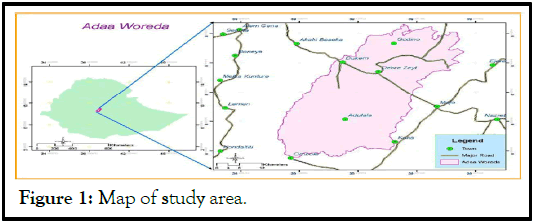
Figure 1: Map of study area.
Types and sources of data
The study was conducted using both quantitative and qualitative. The primary and secondary data were the sources of information.
Sampling procedure and sample size
This study used samples 384 of dairy producers in order to illustrate their willingness to pay for artificial insemination technology. The sample size was determined by using the Cochran formula at a 5 percent level of precision.

Methods of data collection
A structured questionnaire was designed and used in order to gather information from dairy producers and key informant groups.
Method of data analysis
The effect of explanatory variables on willingness to pay for artificial insemination dairy technology was analyzed using the econometrics model. The Tobit econometrics model was used in this paper. The model can be explained with latent covariate y*. The model is also called a censored regression model, because some observations on yi*(yi* ≤ 0) are censored. In other words, it conspired that latent variable y* is observed only when yi*>0. This model is for the metric dependent variable and when it is “limited” above or below some cut-off level. This suggests that the model proposed by Tobin is appropriate for analyzing happening or non-happening events [4].

if y* greater than 0
0, if y less than or equal to 0……………………………… (2)
Where yi is the dairy producers’ willingness to pay by households expressed as the natural logarithm of ETB (Ethiopian birr).
x=A vector of variables willingness to pay for the artificial insemination dairy technology
β=A vector of parameters to be estimated and
εi=The disturbance was taken as if it was independent and normal in its distribution.
The dairy cattle breeds and crossbreeding attempts and programs in Ethiopia
In Ethiopia, there were nearly twenty-seven indigenous cattle breeds, two exotic breeds and crossbred dairy cattle specious used for dairy production. The advanced dairy business was started in the 1950's in the country. The initiation of crossbreeding for dairy cattle was done when 300 Friesian and Brown Swiss dairy cattle were donated by united nations relief and rehabilitation administration. Producers were begun to use improved dairy cattle breeds and related technological packages during this period of time. The well-known breeding strategies to improve dairy production are the selection together indigenous breeds and importation of exotic livestock species or crossbreeding [5].
The activities of crossbreeding were begun by Chilalo Agricultural Development Unit (CADU) in Arsi and Wolaita Agricultural Development Unit (WADU) Wolaita areas and played significant role in the expansion of dairy production in the country. Three local cows specious (Borena, Horro and Barca/Begait) crossbred with Friesian, Jersey and Simental relying on research-based experimental performance of crossbred conducted by the Institute of Agricultural Research (IAR). Moreover, the emergency of the National Artificial Insemination Center (NAIC) in 198 has contributed highly to the distribution of Artificial Insemination (AI) services to rural, peri-urban areas of the country through the regional administration. Dairy Development Agency (DDA) established by the government also contributes its role to the production and distribution of crossbred dairy cattle in the Addis Ababa milk center and to other parts of the country by importing exotic/crossbred cattle.
Nowadays, dairy cattle crossbreeding programs were established in different areas of the country with purposes and objectives. Five dairy cattle crossbreeding programs were well known in Ethiopia these were: Fogera cattle genetic improvement, Holeta research center crossbreeding Borena cattle with holiestain freesia, Adeaberga Jersey cattle breed improvement pure breeding cattle, Bishoftu research center herd crossbreeding Holeistain freesia with local Borena cattle breed and development of composite breed Holeistain Ferresian with Arsi breed. Indigenous cattle breeds are playing a crucial role in contributing to the national dairy development of the country, although, the productivity per cow is very low as compared to the exotic breeds’. There were also about four (4) local cow breed improvement schedules in the country. These included: Borena cattle breed improvement and conservation ranch, Begait cattle breed conservation and improvement, Fogera cattle breed improvement and multiplication and Horro cattle breed improvement ranch [6].
The source and the distribution of Artificial Insemination (AI) technology in Ethiopia
The development of crossbreeding programs for increasing the productivity of dairy cattle is crucial agenda of the sector in Ethiopia. It was started for the time by the Institute of Agricultural Research (IAR). The main source of artificial insemination now in Ethiopia is national artificial insemination center. It performs two basic activities. The first one is to find sources of herds (from donor or indigenous) and make fertilization by itself. After succeeded fertilization step selection of fertilized species would take place. The selected specie would go to give to stock cattle Figure 2.
The second operation of the national artificial insemination center is to select the bull/semen depending on the purpose for what was needed. The purpose of selection could be milk, meat, good health condition and diseases resistances ability of the specie. The veterinarians (in experts of animal health) would distribute the selected specie. These would give to government producers, non-government producers and private producers. Finally, the species provide the targeted purpose after they are added to the given stock of cattle Figure 2.
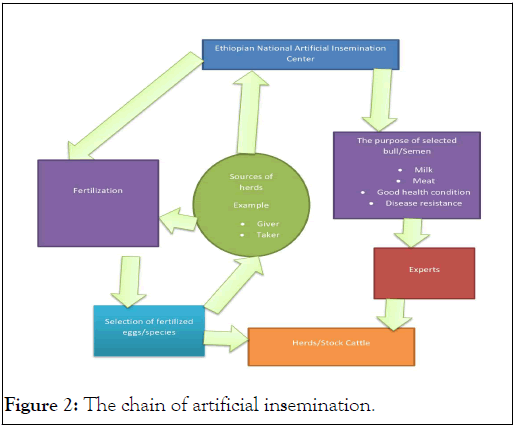
Figure 2: The chain of artificial insemination.
The application of the Tobit model on smallholder willingness to pay for artificial insemination dairy technology
According to the result of the Tobit model, four variables were found to significantly affect smallholder willingness to pay for artificial insemination dairy technology. These variables were access to training, land ownership, membership in the cooperative and credit usage. It is illustrated in Tables 1 and 2.
| Model 1 | Model 2 | Model 3 | ||||
|---|---|---|---|---|---|---|
| Variables | Coefficient | SE | Coefficient | SE | Coefficient | SE |
| Training | 0.432** | 0.214 | 0.487** | 0.217 | 0.498** | 0.222 |
| Landow | 0.418*** | 0.0821 | 0.413*** | 0.0821 | 0.413*** | 0.0821 |
| Leduca | 0.0748 | 0.0729 | 0.0613 | 0.734 | 0.0601 | 0.0736 |
| Dcopsite | -0.0939 | 0.114 | -0.0802 | 0.114 | -0.792 | 0.114 |
| Mcoop | 17.6*** | 1.37 | 17.8*** | 1.37 | 17.9*** | 1.38 |
| Credit | 0.00026* | 0.00013 | 0.00027** | 0.00013 | 0.00027** | 0.00014 |
| Sex | -0.286 | 0.794 | -0.336 | 0.794 | -0.337 | 0.794 |
| Age | 0.0284 | 0.499 | 0.0616 | 0.542 | 0.064 | 0.0553 |
| Nincom | 0.499 | 0.839 | 0.495 | 0.838 | 0.478 | 0.841 |
| Fsize | - | - | -0.406 | 0.262 | -0.43 | 0.261 |
| Expr | - | - | - | - | -0.0147 | 0.665 |
| cons | 9.36 | 3.13 | 9.53 | 3.13 | 9.56 | 3.13 |
| sigma | - | - | - | - | - | - |
| cons | 6.87 | 0.273 | 6.86 | 0.273 | 6.86 | 0.273 |
| Log- likelihood | -1152.2 | - | -1150.99 | - | -1150.97 | - |
| Pseudo R2 | 0.1561 | - | 0.157 | - | 0.157 | - |
| Note: Model 1: LR chi2 (9)=426.30 Model 2: LR chi2 (10)=428.72 Model 3: LR chi2 (11)=428.77 Observations number=384, Prob>chi2=0.0000; ***, **, * show significance level of 1, 5 and 10 percent respectively |
||||||
Table 1: Tobit results on willingness to pay for artificial insemination dairy technology.
| OIM | ||||||
|---|---|---|---|---|---|---|
| Wiltpai | Coef. | Std. err. | z | P>z | 95% Conf. | Interval |
| Training | 0.321389 | 0.198866 | 1.62 | 0.106 | -0.06838 | 0.711158 |
| Landow*** | 0.359819 | 0.070323 | 5.12 | 0 | 0.221989 | 0.497649 |
| Leduca | 0.069182 | 0.065923 | 1.05 | 0.294 | -0.06003 | 0.198389 |
| Dcopsite | -0.13433 | 0.10337 | -1.3 | 0.194 | -0.33694 | 0.068268 |
| Mcoop*** | 16.65344 | 1.244158 | 13.39 | 0 | 14.21493 | 19.09194 |
| Credit* | 0.000225 | 0.000122 | 1.85 | 0.065 | -1.4E-05 | 0.000464 |
| Sex | 0.17086 | 0.715923 | 0.24 | 0.811 | -1.23232 | 1.574042 |
| Age | 0.038254 | 0.049767 | 0.77 | 0.442 | -0.05929 | 0.135796 |
| Nincom | 0.283928 | 0.756252 | 0.38 | 0.707 | -1.1983 | 1.766153 |
| Fsize | -0.23938 | 0.235369 | -1.02 | 0.309 | -0.70069 | 0.221938 |
| Expr | 0.012813 | 0.059457 | 0.22 | 0.829 | -0.10372 | 0.129347 |
| _cons | 11.45605 | 2.81291 | 4.07 | 0 | 5.942843 | 16.96925 |
| Note: No. of obs=384 Scale parameter=39.62017 Deviance=14738.70489 Pearson=14738.70489 Variance function: V (u)=1 (Guassian) Link function: g (u)=(identity) AIC=6.547967 BIC=12525.07 Log likelihood= -1245.209628 |
||||||
Table 2: Generalized linear models results.
Willingness to pay for artificial insemination
In developing countries, to maintain the provision of agricultural services to producers have advocated the use of the service fees. Successful practices of such schemes need awareness of the factors determining the producers’ willingness to pay. The smooth use of embryo implantation in dairy cattle started with the introduction of nonsurgical embryo restoration in the mid-1970's and advanced with the use of nonsurgical moving by that time. Smallholder producers were needed to adopt artificial insemination technology. This was because of the fact that the business of sexed semen in the dairy industry has high costs incurred and low productivity. Farmers thought of the technology as a “brilliant idea,” and they believed is technology necessary “in order to keep dairy farming economically sustainable”. Producers highly needed top technologies that increase: Farm efficiency, farm economics, decision making, animal welfare and producers’ happiness. However, they want for free or pay less for the services. As it is illustrated in Figure 3 the producers want to get artificial insemination at minimum services for free. The maximum they were willing to pay was 50 ETB. On average the produces are capable of paying 10-15 ETB for the artificial insemination technology [7].
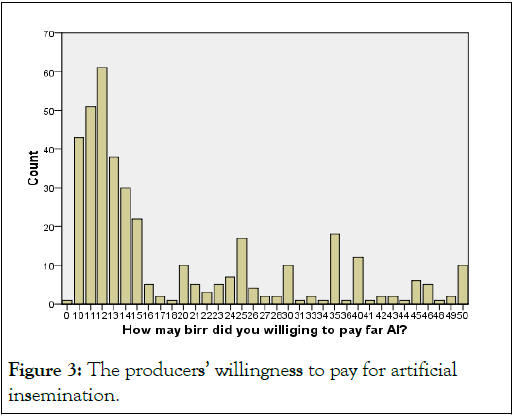
Figure 3: The producers’ willingness to pay for artificial insemination.
The dairy related training, land ownership, dairy cooperative membership and usage of credit services
Training: Capacity building plays a crucial role for smallholder producers in order to adopt dairy technologies generally and artificial insemination technology specifically. The accessibility of training to producers was important to be the members of the dairy cooperative. The provisions of dairy-related training significantly affect producers’ willingness to pay for artificial insemination technology. As indicated in Figure 4 producers were limited to training of dairy-related technologies for the past five years. As it shows almost the majority of producers did not have training. This magnifies the lack of producers’ awareness relating to artificial insemination technology.
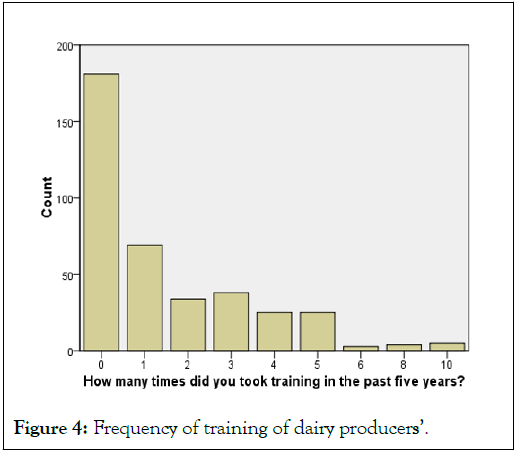
Figure 4: Frequency of training of dairy producers’.
Land ownership: The land is important factor in production. The business-like dairy production uses the land as an input to produce products. For the producers to pay and adopt artificial insemination dairy technology they need enough land in order to raise cattle production. Smallholder producers engaged in a mix-farming system and as indicated in Figure 5 the majority of producers have 4 hectares of land. They thought as if this amount of land is not enough for the mixed farming system. The thought by itself was not problem: There was a lack of awareness and training provision determines the perception of the producers on land ownership [8].
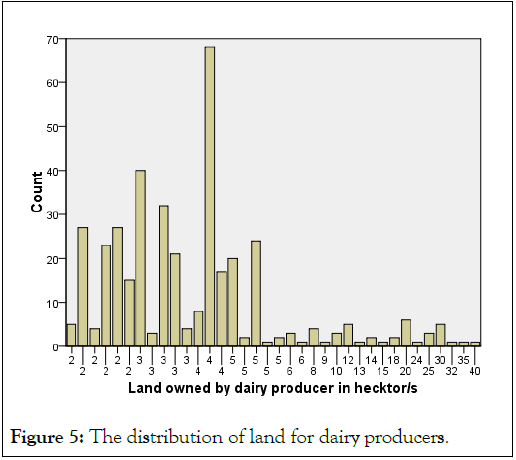
Figure 5: The distribution of land for dairy producers.
Dairy co-operative membership: Socioeconomic factors affect the cooperative membership of producers’. The primary dairy cooperative plays a significant role from awareness creation up to technology adoption for smallholder dairy producers. The Tobit model illustrated that dairy cooperative membership affects positively and significantly at less than 1 percent level of significance. However, as it is shown in Figure 6 the majority of smallholder producers were not member of the dairy cooperative. From the total sample size of 384 smallholder producers, only 118 were members of dairy cooperatives whereas the rest 266 smallholder producers were non-members of dairy cooperatives. In percentage, 69.3 percent of smallholder producers were non-members whereas only 30.7 percent were members of dairy cooperatives.
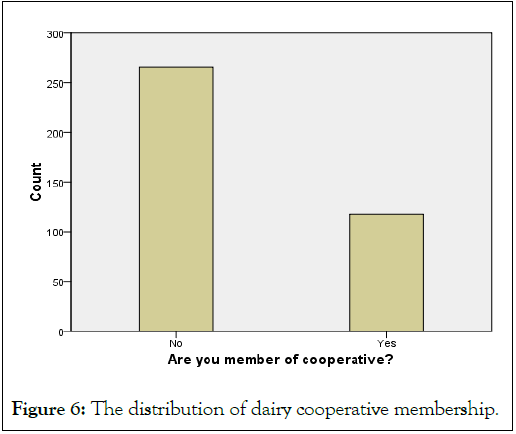
Figure 6: The distribution of dairy cooperative membership.
Usage of credit services: A credit service is a feasible financial source for smallholder dairy producers’ access to it. Even though credit is the determinate financial source for smallholder dairy producers they were limited in access to the services. Access to credit services determines producers’ preferences for cooperative membership. Tobit model output has shown that credit services usage significantly affect smallholder dairy producers at less n 10 percent level of significance to pay for artificial insemination dairy technology. As indicated in Figure 7 very limited smallholder dairy producers were using credit services [9].
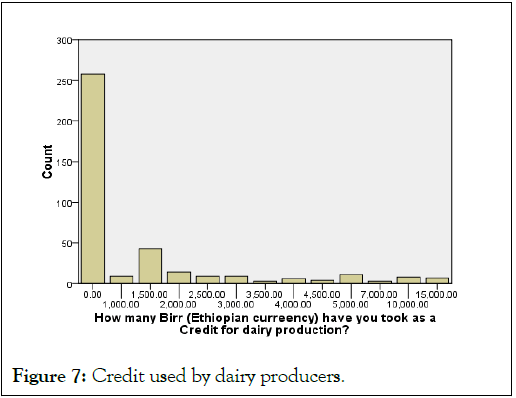
Figure 7: Credit used by dairy producers.
[Crossref] [Google Scholar] [PubMed]
Citation: Charu GS (2025) Dairy Producers’ Willingness to Accept and Pay for Artificial Insemination Adea, Oromia, Ethiopia. J Res Dev. 13:289.
Received: 17-Apr-2024, Manuscript No. JRD-24-30830; Editor assigned: 22-Apr-2024, Pre QC No. JRD-24-30830 (PQ); Reviewed: 06-May-2024, QC No. JRD-24-30830; Revised: 11-Feb-2025, Manuscript No. JRD-24-30830 (R); Published: 18-Feb-2025 , DOI: 10.35248/2311-3278.25.13.289
Copyright: © 2025 Charu GS. This is an open-access article distributed under the terms of the Creative Commons Attribution License, which permits unrestricted use, distribution, and reproduction in any medium, provided the original author and source are credited.